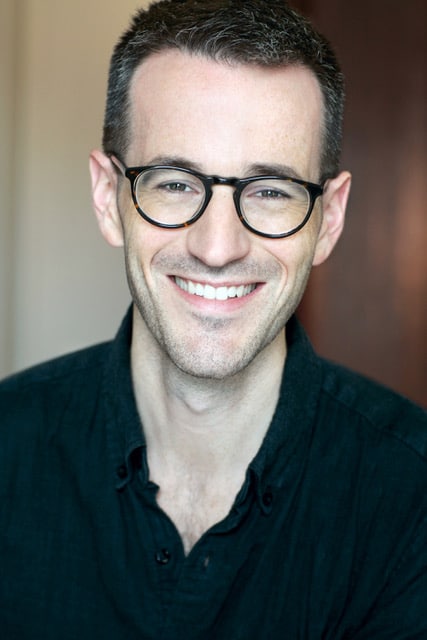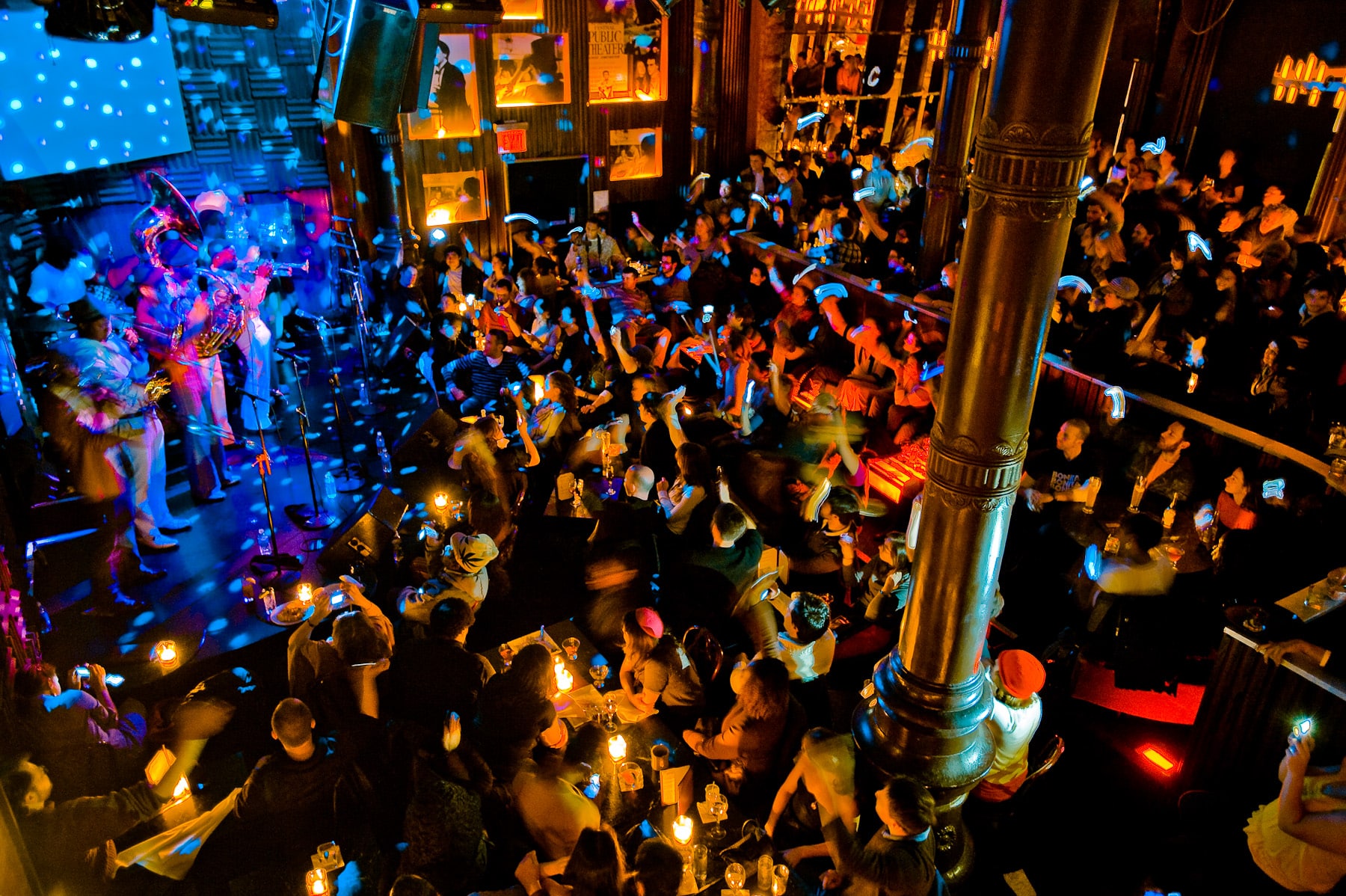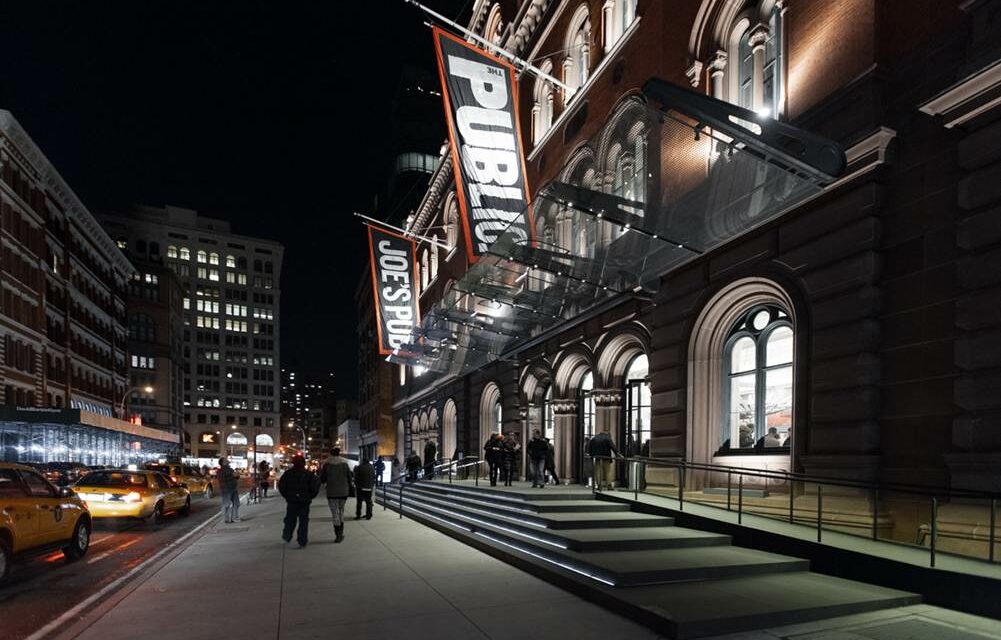EAT AT JOE’S: Joe’s Pub opened in 1998 as a pre-theater restaurant. (Courtesy venue)
Room launched U.S. debuts of Amy Winehouse, Adele
Joe’s Pub in New York City has been a catch-all for music, audiences and artistic expression for 25 years.
Before it became the respected music room that launched the U.S. headline concert debuts for Amy Winehouse and Adele, it was a largely ignored backroom space adjoining The Public Theater.
“There’s a bit of folklore in here, and mostly truth,” Alex Knowlton, director of Joe’s Pub, said of the venue’s inauspicious start in 1998. “You know that drawer in your kitchen with rubber bands and pens and paper clips? That was what the room was.”
Joe’s Pub celebrate its quarter century of operations with a gala on April 8, chaired by long-standing culinary partners from Joe’s Pub and NoHo Hospitality, Kevin Abbott, Serge Becker, Andrew Carmellini, Luke Ostrom, Josh Pickard and Paul Salmon. The event includes a performance by four-time Grammy award winner and 2024 Joe’s Pub vanguard resident Angélique Kidjo.
Before it became a concert venue, the event space had been used as an office by Joseph Papp, theatrical producer and founder of The Public Theater, New York Shakespeare Festival and Central Park’s free Shakespeare in the Park. It was a literary office and used for script storage. It briefly served as the lobby for the theater but, one day, Papp saw more than stacks of cardboard boxes and filing cabinets.

Alex Knowlton
Named for Papp, Joe’s Pub opened on Oct. 16, 1998, at a cost of $2.35 million. Envisioned by George C. Wolfe, the artistic director of The Public Theater, and associate producer Bonnie Metzgar, when it opened it was a pre-theater restaurant with a few performances and occasional workshops. As The Public Theater evolved, Joe’s Pub was reimagined as a nightclub.
“It was an opportunity to meet members of the audience and community that weren’t being served already by the theatrical theater-going experience,” said Knowlton, who was named director in 2018.
“George was in the space and looking at the architecture of the room, and there are these columns in the space,” Knowlton explained. “He was looking at them, thinking, ‘Oh, there should be a column in the corner’ where what is now Joe’s Pub stage. It was the moment he was thinking, emotionally and artistically, that the stage was holding up that part of the building and holding up the walls around it. The invisible pillar in the space that is making the whole thing exist.”
The Public Theater is made up of three historic buildings that include John Jacob Astor’s private library. None of the theater spaces built on the site started out as performance spaces; they were dormitories and makeshift kitchens tucked in Astor Place, an area of the city between the East and West Villages.
“There was nothing radical in the history of the building to put a theater where one didn’t belong,” Knowlton said, laughing.
After 9/11, Joe’s Pub — like all entertainment venues in the city — tried to figure out how to come back. Bill Bragin, previously director of the venue, doubled down and created the current model to secure the financial foothold. Pre-theater dinner was gone and he designed a way to flip the house two times a night.
“He built the structure we exist in now, which is high volume as far as artists and as far as audiences,” said Knowlton.
Joe’s Pub morphed into a creative catch-all where every format of music and every fan found a home.
“Joe’s Pub’s mission is to give an opportunity for all New Yorkers to engage with or feel represented by, or reflected by, or enjoy at the very least, something on our stage,” Knowlton said. “There are 8.5 million New Yorkers and no way that we could possibly represent every last, every single New Yorker. The impossibility of that makes me love that mission so much.”
From the start, the booking strategy for the independent non-profit was “genre blind” as a way to program, present and work with all genres.

BIG BAND: Hypnotic Brass Ensemble pictured at Joe’s Pub. (Jacob Blickenstaff)
“Over time, we sharpened the point of that language a little bit to say, ‘We’re genre-bounding’ or I like to say, ‘intersectional,’” Knowlton said.
The room is intimate at a capacity of 182. Patrons abut the snug stage. “That, to me, is the magic,” Knowlton said. “That people respond to the physical intimacy of the space, which creates the emotional intimacy. That’s what it’s all about.”
Operating as one of the six performance spaces under The Public Theater umbrella has been beneficial to the overall booking strategy. Thanks to Papp’s early vision and the creation of the Cultural Institution Groups, the city of New York owns the building, which reduces overhead.
“The magic of being a nonprofit is that we can take artistic risks that aren’t for sure financial slam dunks,” Knowlton said. “If we’re not creating space and opportunity for artists we don’t know, then we’re just going to become this closed loop of a copy-and-paste calendar every year. We have seen a lot of our peer independent venues closing or being absorbed into larger machines to survive. It feels humbling and an important charge to not take for granted that we will be around for another 25 years.”







